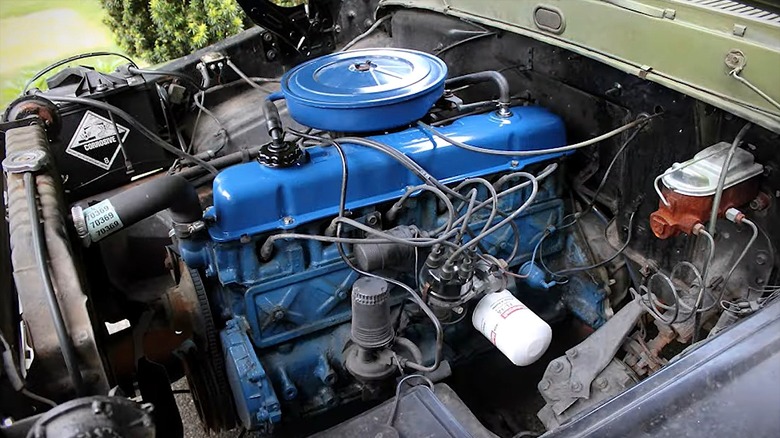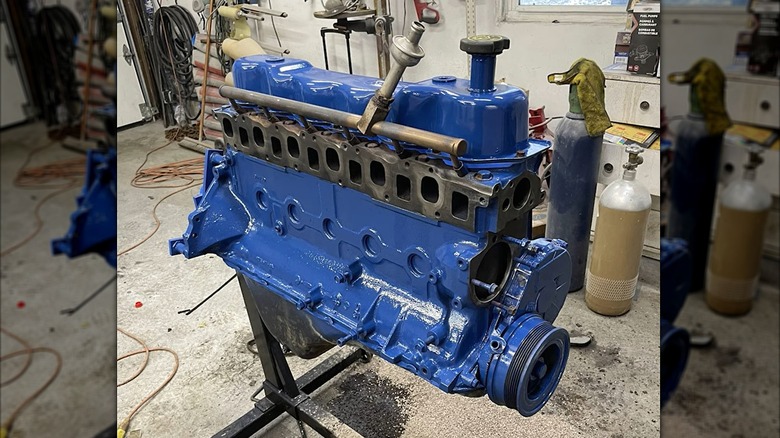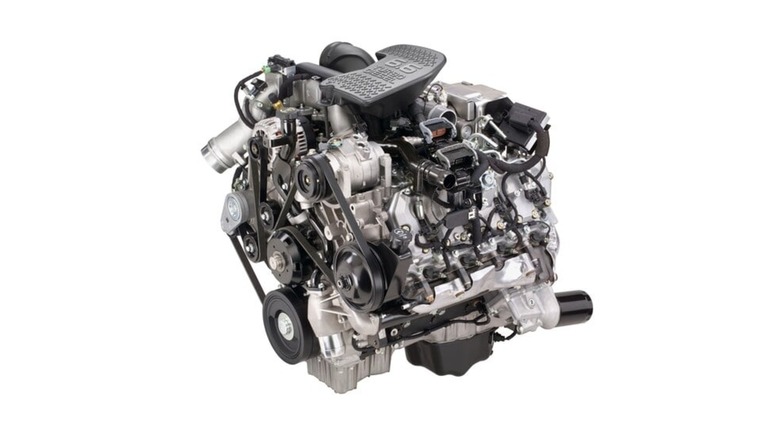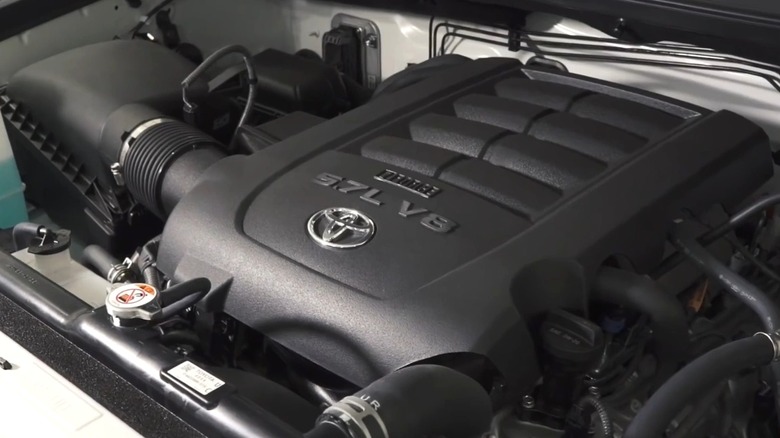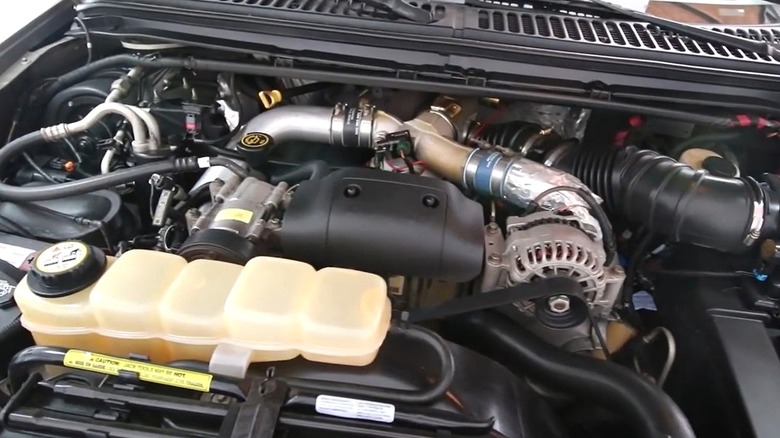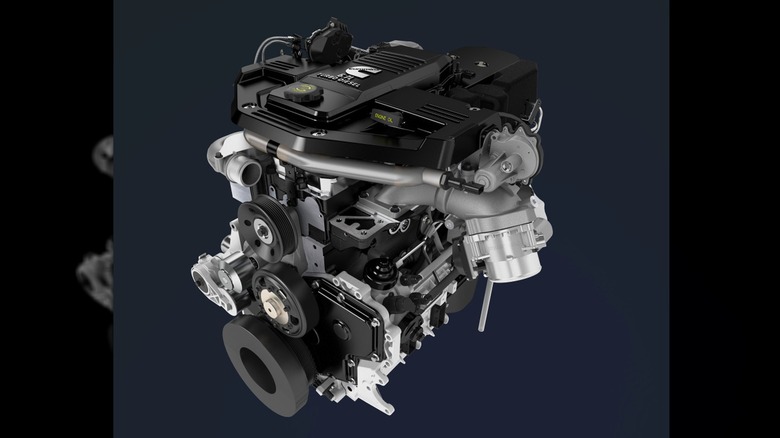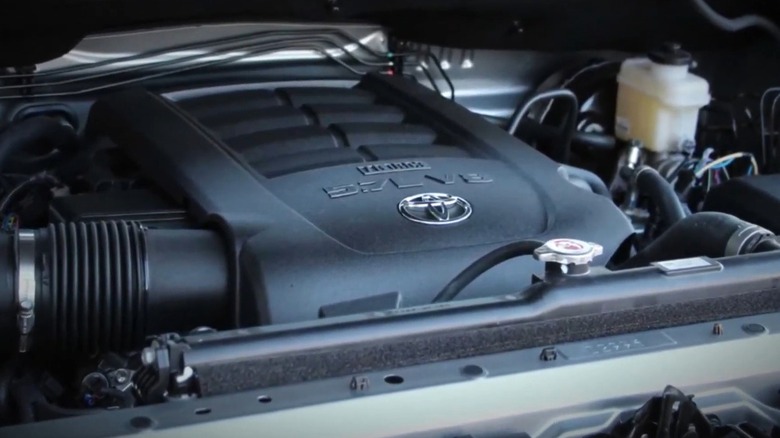5 Of The Most Reliable Engines Ever Put In A Pickup Truck
In discussions of pickup trucks that truly last, the conversation always comes back to what's under the hood. Engines are the heart of every workhorse vehicle. They determine whether a truck fades after a decade or keeps running strong for years and years. Over time, a few powerplants have stood out not just for what they could tow or haul, but for how long they could keep doing it.
These engines powered things like farm trucks, construction rigs, and family haulers, often after the odometer has stopped counting. Each one of these engines has built its reputation on longevity and engineering strength, and earned the trust of owners who've put hundreds of thousands of miles on the clock. Some, like the 5.9-liter Cummins, made torque a household word; the Ford's 300 I6 in its own way too, became famous for outlasting the trucks themselves, which is very impressive.
Many of these engines are still on the road today, quietly doing what they were built to do. They're not the flashiest or the ones with the most tech, but they're the ones owners trust to go beyond 250,000 miles without complaint. These are five of the most reliable engines ever put in a pickup – the kind that proved their worth through time, torque, and trust.
Ford 300 inline-six
Before diesel torque and turbochargers took over, the Ford 300 inline-six was one of those rare engines that became legendary for endurance that could outlast anything else on the road, and Ford used the same engine for over three decades to prove it. Born in 1965 and built in Ford's plant in Cleveland, it powered everything from pickups to farm equipment, generators, and even airport tugs. With power ranging from about 100 to 150 hp and torque around 223 to 260 lb-ft, it was really built to work by also securing victories for Ford trucks in the Baja 1000. Its low-end grunt at just 2,000 rpm made hauling, towing, and farm use effortless, and it could be found under the hood of any F-100, F-150 or F-600 until the end of its production run in 1996.
Its cast-iron block and head, forged crankshaft, and seven main bearings gave it the kind of internal strength most modern engines can only dream of. The cam-in-block design with pushrods kept things basic, while the 1987 fuel-injection move also improved efficiency and reliability all the way. Engines that were serviced regularly could easily surpass 300,000 miles without ever being opened, and even neglected ones often made it past 100,000. Common wear points like leaks from the rear seals or exhaust were minor compared to its overall lifespan.
GM 6.6-liter Duramax LBZ Diesel
The 6.6-liter LBZ Duramax V8 marked a major shift in GM's heavy-duty lineup when it arrived in 2006. Though production ended in 2007, still it left a lasting mark in trucks like the Chevrolet Silverado HD and GMC Sierra HD, where it became known for its strength and long-term reliability. Built in the U.S., the LBZ featured a cast-iron block with aluminum heads and intake manifolds, giving it a stronger but lighter structure. Plus inside, its overhead valve setup with four valves per cylinder kept things efficient too.
Performance-wise? The engine improved noticeably over the previous LLY engine churning out 360 horsepower and 650 lb-ft of torque. Although that's thanks to the ECU tuning and upgrades to the Bosch common-rail fuel system and CP3 injection pump. With stronger I-beam connecting rods and improved internal airflow, the engine ran smoother under load and was less prone to overheating or injector issues. However, if you need to know more, we have the engine covered already, from how it paired with either the Allison 1000 six-speed automatic or the ZF S6-650 manual to even how it earn its place as one of the best diesels engines ever fitted in a truck.
The emissions setup which included an EGR and Diesel Oxidation Catalyst led to soot buildup, and some owners even noted minor cracks in aluminum parts or wear in plastic water pump impellers. Still, when it is maintained properly and kept close to stock, the LBZ is nearly indestructible.
Toyota 5.7-liter i-Force V8
Toyota's 5.7-liter i-Force V8 quietly earned its reputation as the cornerstone of Toyota's full-size lineup over more than a decade. Officially called the 3UR-FE, the engine was introduced in a 2007 Tundra mainly for American roads. Built on a solid aluminum block, it paired dual overhead cams with Toyota's variable valve timing system to deliver a smooth and naturally aspirated punch. The result was 381 hp and 401 lb-ft of torque, numbers that gave the Tundra serious muscle, especially when paired with its 10,000-pound towing capacity. Plus, the engine could crank up even more power — up to 504 hp and 550 lb-ft of torque — when equipped with a TRD supercharger.
With over 14 years of production, the 3UR-FE was over-engineered with forged internals, a robust cooling system, and a conservative tune that favored longevity over brute force. Many owners easily saw their pickups surpass 300,000 miles. One even saw its 2007 Tundra reach a million-miles mark without really doing much on its upkeep. But early pre-2014 models occasionally suffered from air pump issues, with leaky cam towers, or minor oil seepage around the 100,000-mile mark. However, these small quirks were quickly ironed out and was never enough to hurt its reputation. In a time when turbocharged and hybrid engines dominate, the 5.7-liter i-Force still stands as one of Toyota's most powerful engines ever made.
Ford 7.3-liter Power Stroke Diesel
Few diesel engines embody reliability like Ford's 7.3-liter Power Stroke. Introduced in 1994 and built by Navistar, this V8 became the backbone of Ford's Super Duty trucks with about two million units produced. When it first hit the market, it pushed out 215 hp with up to 425 lb-ft of torque, which later climbed to 225 horsepower and 450 lb-ft by 1996. Those numbers, paired with its ability to tow nearly 13,900 pounds, which gave Ford's heavy-duty lineup the muscle and endurance it needed to dominate the market. And that durability also came from its smart engineering.
The gray cast-iron block and forged-steel internals gave it industrial-grade toughness, while the HEUI (hydraulically actuated, electronically controlled, unit Injector) system brought in precise fuel delivery without sacrificing reliability. That combination of old-school strength with this kind of engineering made the 7.3-liter nearly unkillable. Many owners have logged between 400,000 and 500,000 miles on untouched engines, and when properly maintained, injectors alone could last over 200,000 miles before even needing any attention.
Even with age, the 7.3-liter Power Stroke continues to prove its worth. Issues like camshaft sensor failures, rust, or turbo-pipe leaks were like small trade-offs for an engine that could outlive multiple pickups. Because of how reliable it was, to date, Ford still produces 7.3-liter remade versions that are built to its original specs, and backs them with a 24-month unlimited-mile warranty, further cementing its legacy.
Cummins 5.9-liter 12-Valve Turbo Diesel
If one engine cemented the diesel pickup's legendary reputation, it's the 5.9-liter 12-valve Cummins. Originally designed for industrial equipment like tractors and excavators in the mid '80s, when Dodge dropped this engine into the Ram 2500 and 3500 in 1989, everything changed. With its seven massive bearings, forged internals, and cast-iron block, it was overbuilt from the start. Early versions pushed around 160 hp and when paired with tough manual or automatic transmissions that could handle anything from farm work to highway hauling. Even Cummins fans, who know how much torque the 5.9-liter can throw down often call it the holy grail of diesel engines.
By 1994, the game evolved with the introduction of the Bosch's P-pump. This upgrade boosted power to as much as 215 hp and 440 lb-ft of torque, while opening the door for easy tuning. With a few simple tweaks like bigger injectors or an upgraded turbo, owners could unlock 300 hp while keeping the same rock-solid reliability. As Cummins marketing director David Goggins told our sister site Jalopnik, "A lot of the reason that engine is as durable as it is, is because we designed it to be a heavy-duty, commercial kind of engine."
That philosophy paid off. With clean fuel and regular filter changes, these engines often ran between 500,000 to 700,000 miles, and some even topped a million. Its purely mechanical design meant fewer parts to fail, and even after the 24-valve took over in '98, the 12-valve legacy still remains unmatched.
Methodology
The goal in this post was to understand what makes these engines so durable and trusted over time, focusing on real-world dependability rather than just power or performance numbers. Information was gathered from various reliable automotive sources like MotorTrend, iSeeCars, Jalopnik, J.D. Power, and Edmunds. Owner experiences, mechanic insights, and reports from truck enthusiast communities were also reviewed to get a complete picture of how these engines perform after years of use.
Each engine was evaluated based on how well it holds up over high mileage, how easy it is to maintain, and how consistently it performs under tough conditions. Real-world longevity, repair frequency, and owner satisfaction were key factors. These info was then compared across different models and generations of pickup trucks to determine which engines can be depended on the most.
